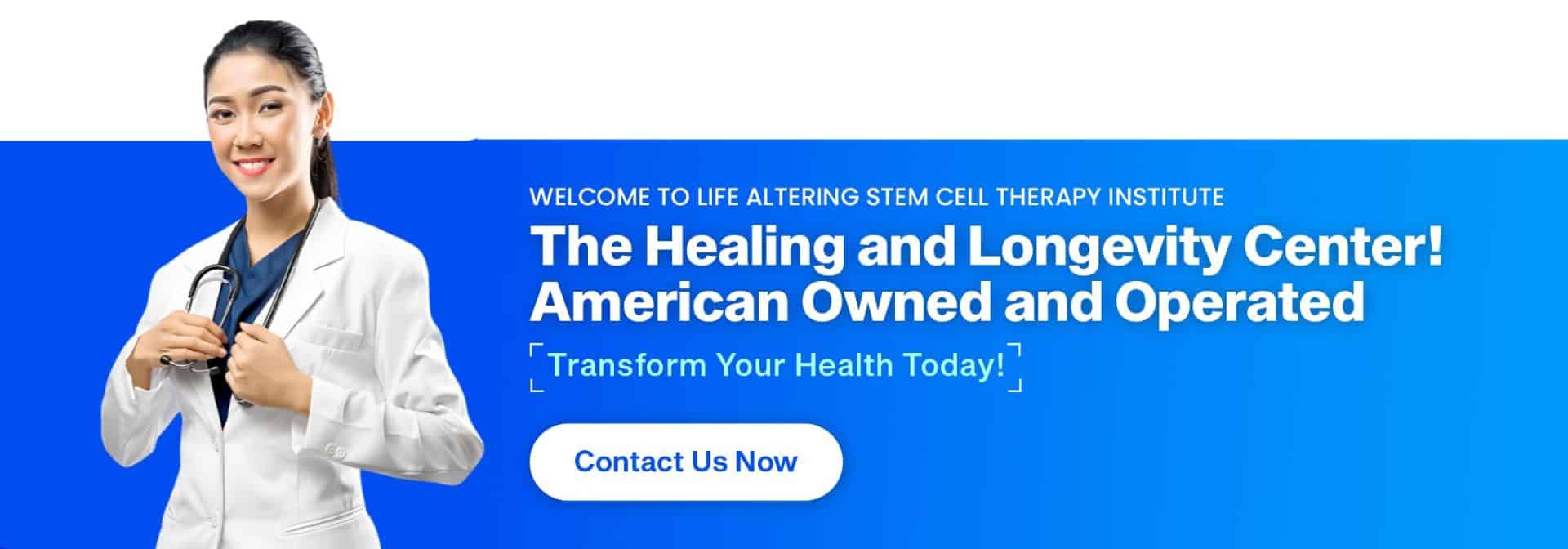- Home
- About Us
- Book Appointment
- Treatments
- Alzheimer’s Disease
- Anti-Aging
- Autism
- Autoimmune Disorders
- Back Pain
- COPD
- Crohns Disease And Ulcerative Colitis
- Erectile dysfunction and Penis enlargement
- Fibromyalgia
- Hip Pain
- Knee Pain
- Lupus
- Lyme Disease
- Multiple Sclerosis
- Muscular dystrophy
- Parkinsons Disease
- Peripheral And Diabetic Neuropathy
- Post Cancer Treatments
- Post Stroke Recovery
- Psoriasis
- Rheumatoid Arthritis
- Shoulder Pain
- Join The Club
- Aesthetics
- Blog
- Contact Us
Nearly 2 billion people around the world are affected with musculoskeletal disorders. One-third of the UK’s population suffers from musculoskeletal conditions such as back pain or arthritis.
Similarly, nearly 130 million US adults have musculoskeletal conditions.
Musculoskeletal defects are one of the leading causes of worldwide disabilities.
Musculoskeletal disorders impact the mobility and strength of a person.
These diseases and injuries severely impact the quality of life. It could lead to mental stress, early retirement from work, depression, anxiety, and limited participation in social activities.
There are more than 150 types of diseases that can affect the muscles, bones, joints, tendons, or connective tissues leading to musculoskeletal disorders.
Stem cell therapy using mesenchymal stem cells has highlighted promising results for treating musculoskeletal pain.
MSCs indicate chondrogenesis properties that help to regenerate damaged cartilage for skeletal development.
In this blog, we will explore the benefits of stem cells for orthopedic injuries.
Insights into Musculoskeletal Disorders
The musculoskeletal system comprises muscles, bones, and joints. It helps to regulate the movements of the body. Injuries and diseases limit the functions of the joints and muscles. This can lead to lifelong paralysis or limited mobility. For example, a person with a hip or knee injury cannot participate in heavy lifting duties.
Various musculoskeletal diseases that affect different parts of the body include –
- Joints – These are the locations within the body where two bones meet. Diseases such as spondylitis, rheumatoid arthritis, and osteoarthritis cause degeneration of the joints.
- Bones – Traumatic fractures due to injuries or diseases such as osteoporosis can make the bones weak and brittle.
- Muscles – An aging-related disease that causes muscle loss.
Common causes of short-term musculoskeletal pain are –
- Bruises to the bone
- Fractures in the bone
- Dislocation of a joint
- Mechanical injuries such as carpal tunnel syndrome or tennis elbow
- Torn muscles or tendons
- Cramps in the muscles
- Bone infection or osteomyelitis
Types of Disorders
Common musculoskeletal disorders include –
- Tendonitis – This is a disease that causes inflammation of the tendons, a connective cord joining muscles to bones. Repetitive actions or sudden injuries cause tendonitis, which impacts the mobility of the joints.
- Bone Fractures – A complete or partial cracking of the bone is called a fracture. Accidents to the wrist, ankle, and hips are common causes of this type of musculoskeletal injury.
- Fibromyalgia – A type of disease that causes soft tissue and muscle pain throughout the body.
- Rheumatoid Arthritis – An autoimmune disease that attacks the healthy tissues of the body and causes joint inflammation.
- Osteoarthritis – A disease that impacts the joints and degenerates the cartilage inside limiting movement in older people.
- Carpal Tunnel Syndrome – The compression of the median nerve in the wrist causes a sensation of extreme pain or numbness in the fingers. Wrist injuries, ganglion cysts, and autoimmune disorders increase the risk of this type of condition.
- Systemic Lupus Erythematosus – Joint pain and swelling due to the immune system attacking the healthy tissues of the body.
- Scleroderma – A type of disease that causes too much collagen production and makes the skin tissues thick causing inflammation and pain in the joints, bones, and muscles.
- Gout – A type of inflammatory arthritis that induces joint pain and swelling.
Impact on Life
Musculoskeletal defects degrade the quality of life in the following ways –
- It causes pain and loss of movement.
- Increases the risk of cardiovascular diseases.
- Imposes voluntary or early retirement from work.
- Increases economic burden due to healthcare expenses.
Traditional Treatment Options
Traditional treatment and pain management options for musculoskeletal disorders are –
- Acupuncture – This is a type of minimally invasive targeted treatment where needles are inserted at strategic points.
- Chiropractic care – This is a manual therapy where that includes manipulation of the spine.
- Compression therapy – This is a type of alternative treatment where elastic socks or bandages are used to offer extra support to the legs, feet, and ankles. This treatment improves lower body part blood circulation.
- Osteopathic manipulative treatment – A type of therapy that includes gentle pressure application and stretching to improve the alignment and functions of the bones and muscles.
- Massage therapy – A manual method to relieve a patient from joint or bone-related pain through the application of pressure to the joints, muscles, or ligaments.
- Pain medications – Opioids, antidepressants, topical analgesics, and steroidal injections are all examples of over-the-counter drugs for musculoskeletal pain.
- Hydrotherapy – Also known as water therapy, this is an occupational treatment that uses the buoyancy of water to offer pain relief, improve joint functions, and enhance the overall body balance. This treatment can help to heal osteoarthritis, muscle tears, and lower back pain.
- Steroidal injections – Corticosteroid injections can reduce inflammation and pain with short-term relief for osteoarthritis and rheumatoid arthritis patients.
- Surgery – Surgical options for musculoskeletal disorders are called orthopedic surgeries. Different categories of surgeries are –
-
-
- Soft tissue repair – A surgical option to repair torn ligaments and replace the damaged tissues.
- Joint fusion surgery – A surgical procedure to fuse two or more bones.
- Osteotomy – Surgical realignment of joints and bones to fix deformities and reinstate body balance.
- Joint replacement – Replacement of damaged joints with metal, prosthesis, or ceramic.
-
Conventional Treatment Challenges
Several challenges for musculoskeletal disorders conventional treatment indicate –
- Lack of personalized treatment plans for specific conditions and symptoms.
- Short-term and ineffective treatment that cannot address the root cause of the disease.
- No pain reduction through opioid medication.
- An increased rate of surgery indicates an increased rate of post-surgical complications.
- There is no fixed recovery or rehabilitation time for patients who went through traditional treatment for musculoskeletal injuries or diseases.
Overview of Stem Cell Therapy
Stem cell therapy is the newest treatment option in the healthcare block that promotes natural healing from injuries and diseases.
Stem cells act as the body’s repair system. It repairs damaged tissues and cells.
Moreover, it is a minimally invasive and non-surgical treatment that not only alleviates pain but also addresses the root cause of a disease.
Types of Stem Cells
Varieties of stem cells include –
- Mesenchymal stem cells – Found in the adipose layer, human umbilical cord tissues (Wharton’s Jelly), and bone marrow, these stem cells are effective in healing orthopedic conditions.
- Embryonic stem cells – A type of adult stem cells that can convert into different types of cells.
- Adult stem cells – Present in the tissues and different organs of an adult, these cells differentiate and transform into several types of organ tissues.
Mechanisms of Stem Cells
Multipotent MSCs have different functions. Some of the properties highlight –
- Tissue repair – The ability of MSCs to heal immune-related diseases and repair skeletal tissue damage to the bone and cartilage.
- Tissue regeneration – MSCs stimulate the regrowth of tissues by accelerating the production of growth factors, mitochondria, and nucleotides.
- Immunomodulation – It prevents the actions of T-cells and tolerogenic dendritic cells to improve immune system responses.
- Paracrine signaling – Mesenchymal stem cells release chemokines and cytokines to promote cell signaling.
- Cell differentiation – Stem cells are able to differentiate between different types of cells, migrate to the injured area, and transform into necessary cells to promote self-healing.
How is Stem Cell Therapy a Game Changer?
The top reasons why stem cell therapy is a novel and therapeutic alternative to traditional treatment for musculoskeletal disorders are –
- Addresses the root cause of the injury or disease and provides long-term relief.
- The ability of stem cells to reconstruct damaged bones and joints to improve mobility and functions.
- Restores the ability of the immune system to support natural tissue regeneration.
- The potential of stem cells in healing several conditions such as ligament tears, tendon injuries, muscle injuries, joint injuries, and arthritic problems.
Application of Stem Cell Therapy in Musculoskeletal Disorders
Stem cell therapy has shown promising results for treating musculoskeletal disorders through bone, cartilage, and tendon regeneration. Moreover, it helps to reverse the effects of joint diseases such as osteoarthritis. Also, it cures degenerative disc diseases of the spine and alleviates musculoskeletal pain that is unaltered even after standard treatment.
Stem Cell Therapy for Joint Injuries
Stem cell treatment results for joint pain show –
- Osteoarthritis – Stem cell therapy can restore joint movement, and reduce pain, and other symptoms of osteoarthritis. Stem cell therapy for cartilage repair releases anti-inflammatory factors.
- Rheumatoid arthritis – MSCs prevent the growth of cytotoxic T-cells strengthening the immune system to fight inflammation repair damaged tissue and reduce pain for RA patients.
- Joint degeneration – The ability of stem cells to make artificial tissues to repair damaged bones, cartilage, and ligaments.
Stem Cell Treatment for Ligaments
Stem cell therapy is an effective treatment for healing ligament and tendon-related injuries. Some of the treatment benefits indicate –
- Tendonitis – Reduces inflammation and pain, promotes chondrogenesis or the formation of chondrocytes (cartilage cells), and replaces damaged cells.
- Anterior Cruciate Ligament (ACL) injuries – A minimally-invasive and non-surgical treatment procedure to reduce inflammation, regulate the immune system, relieve pain, and improve the functions of the knee.
Overview of Stem Cell Therapy for Spinal Conditions
The results of stem cell therapy for chronic back pain and spinal cord injuries showcase –
- Helps to repair damaged neural tissues. MSCs can prevent inflammation of the joints, cartilage, and tissues. Additionally, it can eliminate the chances of cell death. Moreover, stem cells can regenerate lost neurons to repair the spinal cord.
- Mesenchymal stem cells restore the cellularity of degenerative discs. This controls inflammation.
- Stem cells treat the root cause of the pain without medicines and surgery.
Read Also: Mesenchymal Stem Cell Therapy: Promising New Pulmonary Fibrosis Treatment
Clinical Reports of Stem Cell Therapy
Stem cell therapy provides muscle recovery, rejoins meniscal tears, and repairs tendon and ligament injuries.
Case Studies
- Case Study 1(Stem Cell Therapy for Arthritis) – 329 osteoarthritis patients were given mesenchymal stem cell therapy using the intraarticular method. These patients were evaluated 2 years post-treatment. The results of stem cell therapy for knee pain without surgery indicated significant pain relief regardless of age and gender. Most importantly, it helped them avoid knee replacement surgery.
- Case Study 2(Regenerative Therapy for Bone Healing) – Elsei went through a car accident that caused a torn disc injury. She got stem cell therapy to repair her torn disc and manage excruciating pain. She recovered up to 90 percent and did not need any pain medications after the therapy.
Comparative Studies
Differences between traditional treatment and stem cell therapy for musculoskeletal injuries are –
Stem Cell Therapy vs. Conventional Treatments
| Differences | Stem Cell Therapy | Traditional Treatment |
| Nature of Treatment | A minimally invasive and non-surgical treatment method. | A combination of medicines, non-surgical therapies, and invasive surgeries for extreme cases. |
| Effects of Treatment | Long-term improvement of joint mobility, reduced pain, inflammation, swelling, and stiffness. | Short-term term pain relief only. However, there can be significant improvement in a patient’s condition after surgery. |
| Results of Treatment | Helps to repair tissues, regenerate cartilage, and promote natural healing to reform lost cells. | Replacement of injured joints and damaged cartilage with artificial materials such as prostheses. |
| Costs of Treatment | The cost of the treatment depends on the weight, height, gender, and age of the patient. Moreover, the type of stem cell, the type of administration method, and the number of doses impact the treatment expenses. | The costs of surgical methods are higher than minimally invasive stem cell therapy. |
Benefits of Wharton’s Jelly MSCs for Musculoskeletal Complications
The beneficial results of stem cell therapy indicate –
- Enhances chondrogenesis or the formation of new cartilage.
- Promotes the regeneration of tissues and ligaments.
- Promotes the secretion of paracrine and growth factors to prevent inflammation of the joints and tissues.
- Improves bone-forming osteoblasts.
- MSCs can produce a collagen-proteoglycan matrix that heals bone fractures.
- Reduces cartilage defects, improves joint functions, and reduces pain related to osteoarthritis.
- Patients with knee meniscal tears highlighted improved mobility and sports activities 2 years after stem cell therapy.
- It is a viable alternative to surgeries, physical therapy, chiropractic care, hydrotherapy, and other conventional treatment methods with better results.
- Stem cell therapy for shoulder pain and injuries showcases healing from rotator cuff tears, and shoulder sprains, and stops the progress of diseases such as arthritis.
Stem Cell Therapy Administration Procedure
Stem cells are administered to patients using the following methods –
- Intravenous infusions are injected through ventricular channels.
- Intraarticular injections are given through local joints near the affected region.
- Intramuscular injections are given through appropriate muscles near the injured or disease-affected area.
Stem cell doctors are experts who determine the best administration process based on the severity of the patient’s condition, their age, and other medical influences.
Future Findings of Stem Cell Therapy for Musculoskeletal Disorders
Stem cells are novel regenerative medicine for musculoskeletal injuries. Scope of improving the future of healthcare with stem cells highlight –
- Regenerative solutions – Natural repairing of damaged tissues, ligaments, muscles, and bones.
- Personalized medicine – The application of stem cell therapy depends on the patient’s age, gender, weight, height, and other conditions. It is a personalized approach that includes different stem cell doses for different patients.
- Bioengineering – Stem cells are prevalently being used to develop biomaterials for tissue engineering and gene modification to heal several diseases.
- Platelet-rich plasma (PRP) injections – A combination of PRP injections and stem cell therapy can improve the results of musculoskeletal treatment.
Read Also: Remarkable Results of Stem Cell Therapy for Glenohumeral Osteoarthritis Treatment
Takeaway
Stem cell therapy is a revolutionary treatment because it not only promotes the self-healing of the body but also eliminates the risks and expenses related to costly and painful surgeries.
The ability of MSCs to transform into different types of cells and tissues is a promising sign of regenerative treatment.
The Life Altering Stem Cell Therapy Institute is a renowned clinic in Ciudad de México. Explore the benefits of stem cell therapy for back pain & spinal damage with certified experts.
Talk to us today and get the best treatment option to heal your musculoskeletal injury or disease. Experience long-term relief and free movement.


